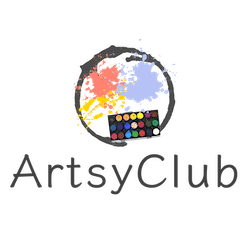The Community's Canvas: Art's Role in Bringing People Together
TL;DRArt has always been a powerful tool for bringing people together. From ancient cave paintings to modern digital installations, art provides a shared language that transcends cultural and linguistic barriers. This article explores the multifaceted role art plays in community building, public spaces, education, digital platforms, festivals, and collaborative projects, shedding light on how it fosters social cohesion, cultural identity, and collective creativity.

Table of Contents
Folk Art and Cultural Identity
Folk art has always played a crucial role in maintaining cultural identity and community cohesion. From traditional crafts to local music and dance, these forms of expression are passed down through generations, strengthening the bonds within communities and preserving their unique heritage.
Public Art and Its Impact on Society
Public art is art in any media that has been planned and executed with the intention of being staged in the physical public domain, usually outside and accessible to all. It can take the form of murals, sculptures, installations, and even performances, and it often reflects the values and identity of the community it inhabits.
Murals and Urban Revitalization
Murals have become a popular form of public art, capable of transforming bland city walls into vibrant expressions of local culture and history. They can revitalize neighborhoods, attract tourists, and instill a sense of pride among residents.
Sculptures and Public Spaces
Sculptures in parks, plazas, and other public spaces create landmarks and meeting points. They can commemorate historical events, celebrate cultural achievements, or simply provide aesthetic value to communal areas.
Installations and Community Engagement
Temporary or permanent installations often encourage direct community engagement. Interactive art pieces invite viewers to become participants, fostering a hands-on connection with art and with one another.
Art in Education and Social Change
Art education plays a vital role in developing critical thinking, empathy, and cultural awareness. It can be a powerful tool for social change, providing a voice to marginalized groups and promoting understanding and tolerance.
The Classroom as a Creative Hub
In the classroom, art can be a means to explore other subjects, such as history or science, through a creative lens. It encourages collaboration among students and helps build a sense of community within the school.
Art Therapy and Healing
Art therapy has been recognized as an effective way to address social issues and personal trauma. By expressing themselves through art, individuals can find healing and a sense of belonging within a supportive community.
The Digital Age and Virtual Communities
The advent of the digital age has expanded the concept of community, creating virtual spaces where art can be shared and experienced by people around the globe.
Social Media and Online Platforms
Social media platforms like Instagram and Pinterest have become digital galleries, showcasing art from diverse cultures and backgrounds. These spaces allow for instant feedback and interaction, connecting artists and audiences in real-time.
Digital Art and Accessibility
Digital art has made it possible for more people to create and share their work, breaking down barriers to entry that existed in traditional art circles. It also allows for art to be experienced in new and immersive ways, reaching wider audiences.
Art Festivals and Cultural Events
Art festivals and cultural events are celebrations of creativity that bring people together in a shared space and time. They can be powerful drivers of economic growth and community development.
Celebrating Diversity and Unity
Festivals often highlight the diverse artistic traditions within a community, fostering a sense of unity through the appreciation of different cultural expressions.
Economic Impact and Tourism
Art events can have a significant economic impact, attracting tourists and boosting local businesses. They can also lead to increased investment in arts and culture, further benefiting the community.
Community Art Projects and Collaborations
Community art projects are collaborative endeavors that involve participants in the creation process. These projects can serve as a means of social intervention, empowering individuals and groups.
Mosaic of Voices
By bringing together a variety of voices and perspectives, community art projects can create a rich tapestry of expression that represents the collective spirit of a community.
Empowerment through Participation
Participating in a community art project can be an empowering experience, particularly for those who feel marginalized or unheard. It provides an opportunity for self-expression and recognition within the community.
Challenges and Considerations
While art can be a unifying force, there are challenges and considerations that must be addressed to ensure it serves the community effectively.
Balancing Inclusivity and Artistic Integrity
Finding a balance between inclusivity and the artist's vision can be challenging. Community art must be accessible and relevant to a wide audience while maintaining artistic integrity.
Funding and Sustainability
Securing funding for public art and community projects can be difficult. Sustainable models must be developed to support the arts long-term, ensuring they continue to benefit communities.
Conclusion
Art has an undeniable power to bring people together, fostering a sense of shared identity and community. From ancient times to the digital era, it has served as a universal language, capable of bridging gaps and creating connections. Whether through public art, education, festivals, or collaborative projects, art remains a vital component of the community's canvas, enriching our lives and societies in countless ways. As we move forward, it is crucial to continue supporting and investing in the arts, recognizing their role in building stronger, more connected communities.
In conclusion, art is not just a reflection of society; it is a tool for shaping it. By embracing the communal aspects of art, we can create spaces where dialogue, understanding, and unity thrive. The community's canvas is ever-expanding, and it is up to us to contribute to its vibrant and inclusive masterpiece.



